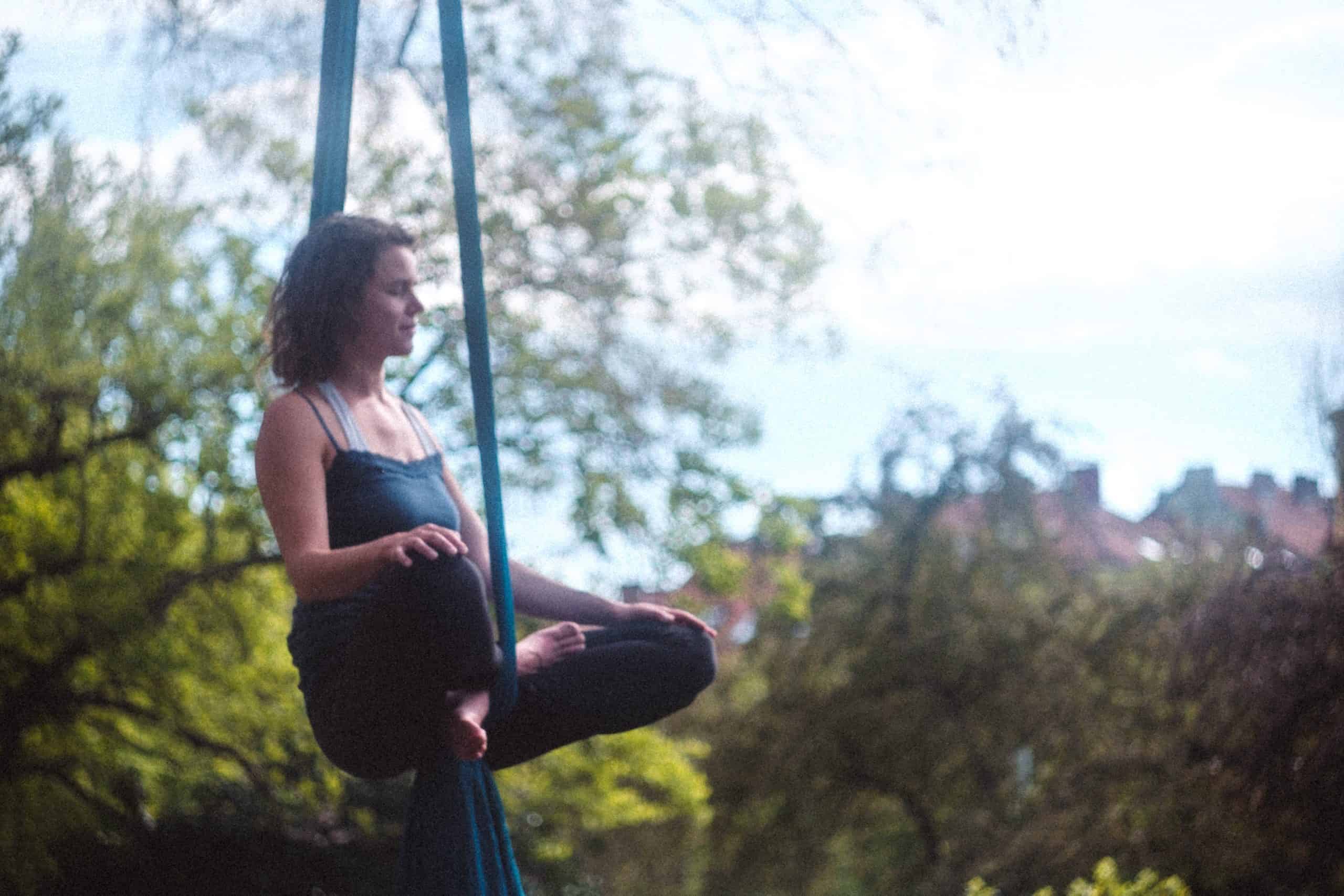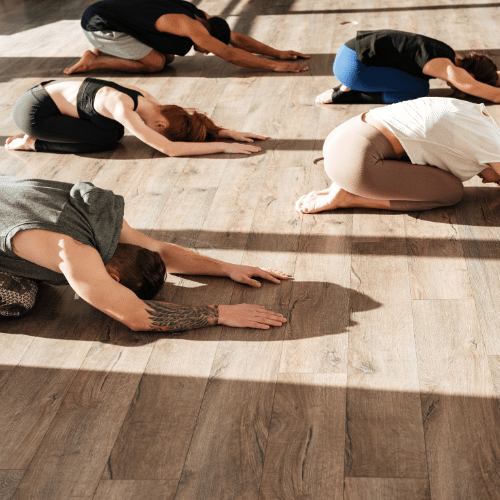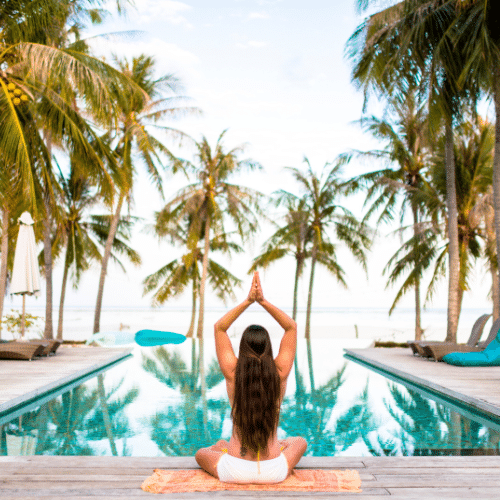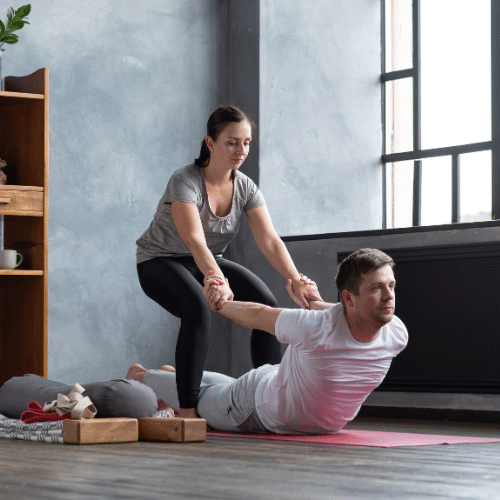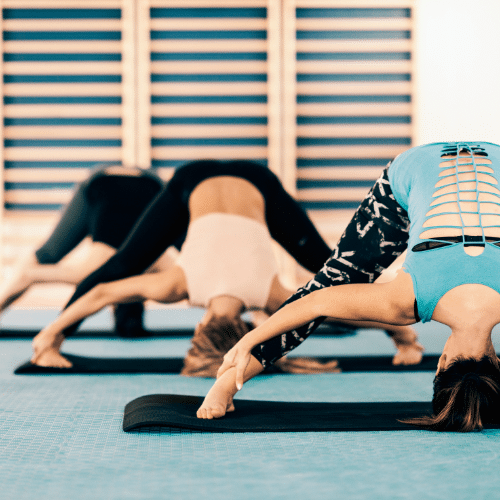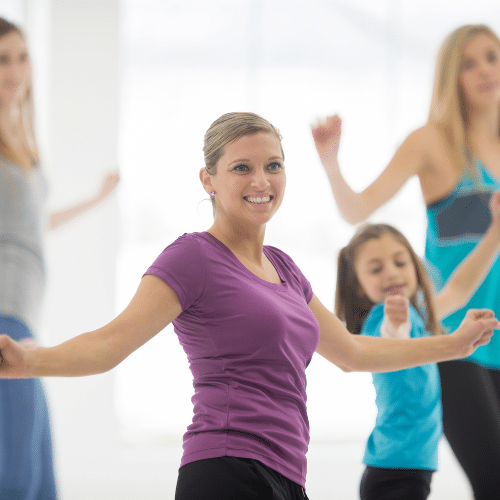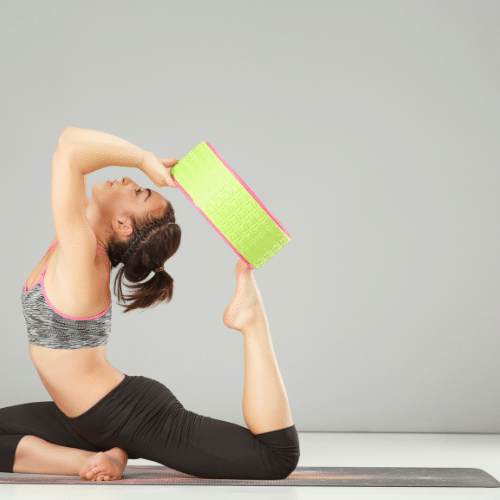If you’ve been doing yoga for a long time, the go-to poses can start to feel a bit boring. There’s no better way to make things feel exciting and new again than by bringing in a new tool! We highly recommend trying out a yoga swing to expand your horizons.
Using a yoga swing to practice asana may be intimidating at first, but you’d be surprised to learn that some yoga swing poses are safer and easier than some standard poses for a yoga mat.
If you want to try a more fun and exciting way to do yoga poses, a yoga swing might be just what you need. If you’re interested, we’ll break down what a yoga swing is, how to use it, the benefits of their use, and six fun new poses designed specifically for use with a yoga swing.
What is a Yoga Swing?
A yoga swing is a strong fabric hammock that is used when practicing yoga poses while suspended in the air. Though it can sometimes be mistaken for a yoga hammock, a yoga swing has handles and thinner silks, while a yoga hammock is thicker without any bells and whistles.
Yoga swings can be made of silk, taffeta, parachute-grade nylon, or a blend of the three. The handles of the swing support your weight and make it easier for you to maneuver between poses during your practice.
You can install a yoga swing on a yoga trapeze stand, mount it from a hook in the ceiling, suspend it from a doorway, or hang it from a sturdy tree. While you can install a swing by yourself, it is much better if you have a professional or an expert to do it for you. It’s also important that you adjust it according to your comfort level. You can practice yoga swing poses in the comfort of your home or in aerial yoga classes near your home.
The Benefits of Using a Yoga Swing
Yoga provides excellent benefits to both your physical health and spiritual health, and this extends to aerial yoga as well. Below are some of the benefits you’ll experience once you fully incorporate the yoga swing into your routine.
Encourages Circulation
Performing yoga swing poses, such as inversions, can improve your circulation. Not only will this improvement in circulation increase your energy and allow you to be more focused on your daily tasks, but it can also decrease your chances of developing cardiovascular disease and other heart conditions.
Supports Your Digestion
Using a yoga swing can stimulate your digestive system. Moving and contorting your body into different poses can relax your abdomen and soothe digestive problems such as indigestion, irritable bowel syndrome, and constipation.
Decompresses Your Spine
Sitting all day at work can compress your spine. Yoga swing poses relieve tension in the spine by stretching and expanding it. You can easily restore your natural alignment when you hang upside down, making you feel more relaxed and comfortable, and your posture will improve as a result.
Improves Your Balance
Using a yoga swing may improve your balance more effectively than traditional yoga can. As people age, our balance tends to decline. One way to strengthen and increase our stability and flexibility is through yoga. Working with a yoga swing means you’re working against gravity, thus helping you focus more and giving you the ability to remain balanced and stable.
Burns Calories
If you’re looking for an exciting and unique way to burn some calories, aerial yoga is a great way to accomplish this. A 50-minute yoga session is said to burn an average of 320 calories. It also improves your cardiovascular fitness, just like traditional aerobics.
Detoxes Your Body
Aerial yoga can be very beneficial for detoxing your body. You may think that eating certain foods and drinking plenty of water is the only way to detox, but this type of yoga is known to effectively detox your circulatory and lymphatic systems. Aerial yoga helps your body release any toxins that are pent up in your lymph nodes, allowing you to detoxify your mind and feel more relaxed.
Boosts Your Brain
Inversion poses improve the blood flow to your brain, which feeds it more oxygen and makes it function better. Your brain will work more efficiently, allowing you better focus and memory. It may also reduce your chance of developing neurological disorders, such as dementia and Alzheimer’s disease, if done regularly for a long period of time.
Promotes Sleep
If you suffer from insomnia-induced sleepless nights, then aerial yoga may be the solution to your sleep problems. Aerial yoga is known to improve your quality of sleep, allowing you to get a good night’s sleep in no time.
Regular practice of aerial yoga reduces tension in your body, helping you get more restful slumber. Yoga swing poses can also help the brain release serotonin, which makes you happy and relaxed. When done in the morning, this will give you high energy in the day and a relaxed mood as you wind down for the night.
How to Use a Yoga Swing
If you’ve just gotten your first yoga swing, you may be wondering how to use it. Here, we’ll give you some basic warmups you can try in your swing to get used to how you need to move with it before you start trying full poses.
You can use a yoga swing to strengthen your core by extending your body into the straps until you feel resistance. Then, suspend your body to perform a plank pose. You can also use the ropes to do pull-ups, which can help develop your core strength and make other poses easier.
You can also use it for inversions, such as a headstand or handstand, to support your pelvic area. Afterward, try extending your limbs by using the ropes and handles of the swing. Try different poses to decompress your spine later on, and remember to always have a spotter near you to avoid injuries.
6 Yoga Swing Poses You Can Try
If you’re new to aerial yoga, swing poses can be nerve-wracking. However, they’re not nearly as complicated as they seem. Here are some easy swing poses for beginners you can try at home to get you started with your aerial yoga workout.
Swing Supported Chair Pose
If you’re hesitant to do an inverted pose on the yoga swing, this is the best beginner’s pose for you. Start with your feet steadily on the ground and hold the swing on your upper back, underneath your armpits. Then bend your knees and carefully lean back and down like you’re sitting on a chair. The angle of your knees should be 90 degrees. You can set the hammock loose and let it support your back as you relax to this position.
The swing-supported chair pose helps strengthen your quad muscles and improve your posture. This is also a good preparation pose for more challenging aerial yoga poses.
Mountain Pose
The mountain pose is one of the simplest swing poses you’ll learn as a beginner. It’s done with firmly grounded feet to give you a stable platform to perform your next move. This pose is also a part of your warm-up exercise. Doing a mountain pose while leaning back into a yoga swing makes the stretching more intense and effective.
The mountain pose strengthens and stretches your shoulder and back muscles, builds stability and balance, and calms the body.
Warrior Pose
The warrior pose, also known as the virabhadrasana pose, is one of the most popular swing poses taught in yoga class. It’s important to note that this pose requires a great amount of balance and coordination to do properly.
To do this pose, you need to assume the mountain pose and then stretch your feet at least four feet apart. Raise your arms from that position, making sure that they are parallel to each other and the floor.
To incorporate the yoga swing, try using the swing to support your bent knee or raise up your straight leg for an added challenge.
The warrior pose can help improve your joints, respiratory system, and circulatory system when properly done. Other benefits of this pose include body toning, stiffness reduction around the neck and shoulders, and flexing the knees, hips, and ankles.
Reclining Angle Pose
The reclining angle pose is one of the easiest yoga swing poses you can try as a beginner. However, just because it’s easy doesn’t mean that it isn’t effective. This pose can strengthen your core, spine, and lower body, enhance your coordination and balance, and improve your sensory-motor awareness.
To do the reclining angle pose, you must first assume the half boat pose, resting your ankles in the swing. From this position, stretch your legs as wide as possible. Once you’ve stretched to your fullest extent, bend back while letting your arms float parallel on the floor.
Superman Pose
The superman pose, also known as flying squirrel pose or the flying spider pose, is one the most fun aerial yoga poses, in our opinion. It may look terrifying for beginners, but you’ll soon realize that it’s not hard at all.
The first step is to wrap your midsection in the swing. Once you’re fully secured, bend forward and firmly grab one handle in each hand. Once you have a stable connection to the swing at your midsection and your hands, lift your legs off of the ground. To balance, you’ll need to push down on the handles, not forward.
Once you’re in place, the superman pose is great for relaxing. Just stay focused on your breathing.
Star Inversion
The star inversion pose seems difficult to achieve for many. However, there’s no need to worry; the swing will fully support your body.
To execute the star inversion pose, you will need to start standing, facing the swing. Hold the swing at pelvis-height and then rest your weight against it as you lean forward. The goal is to do a handstand or a head stand like this, with the swing wrapped in front of your pelvis and behind your legs to hold you upright. Once you achieve this, spread your arms and legs out wide, stretching as far as you can.
You can also start this pose facing away from the swing if you’d rather bend backwards than forwards. This will end with the swing wrapped around your lower back and in front of your thighs instead of the other way around.
Tips for Safe Yoga Swing Installation
Safety must be your top priority when using a yoga swing in your home. To help you stay safe, here are some tips on how to properly hang your yoga swing to avoid accidents and injuries during your aerial yoga sessions.
The first thing to remember is to hang your yoga swing in a secure area of your house. If you’re hanging your swing from the ceiling, make sure that the ceiling is strong enough to handle your weight. You also need to find a space where you can move easily, where there are no obstructions that might limit your movements.
It’s best to let an expert do the installation for you; don’t attempt to install it yourself if you’re not particularly handy. If you’re installing it yourself, take your time with the installation process. Make sure that it fits your height well and test if you can move comfortably with it.
Invest in high-quality mounting equipment. It’s better to invest in superior materials and pay a little more than to buy cheap products that may compromise your safety. Buy products from a reputable yoga swing manufacturer to ensure durability and quality.
The yoga swing will carry your body weight as you move about, which is why it must be installed securely. There’s a serious risk of falling if it isn’t properly installed.
Bottom Line
Not only are yoga swing poses fun, they’re also an excellent way to improve your health and wellness. Make sure that your swing is high quality and is securely installed before trying out the above poses, but once everything is set up, have at it! We hope you enjoy the broadened horizons that this simple tool can bring to your yoga routines.


